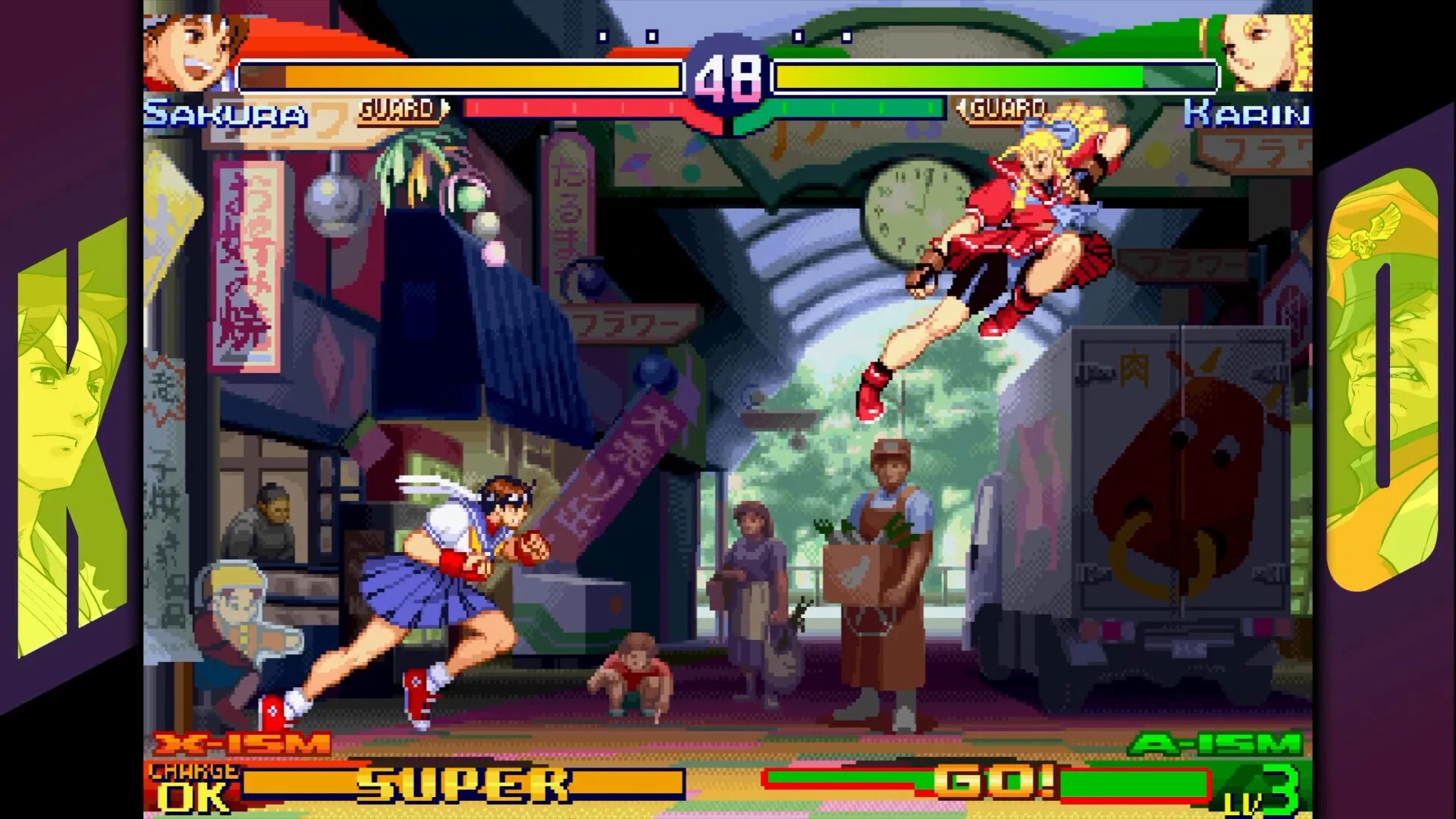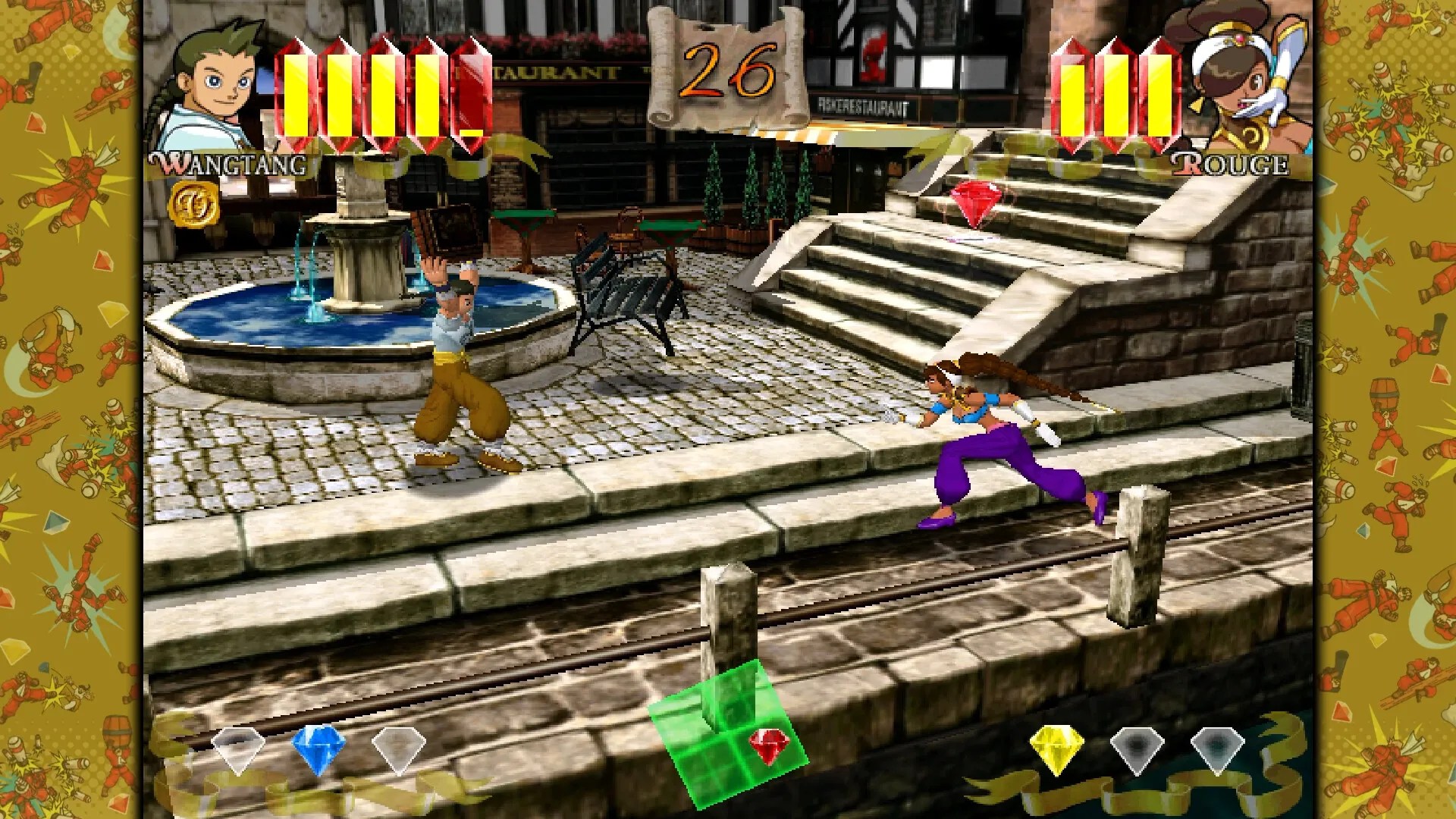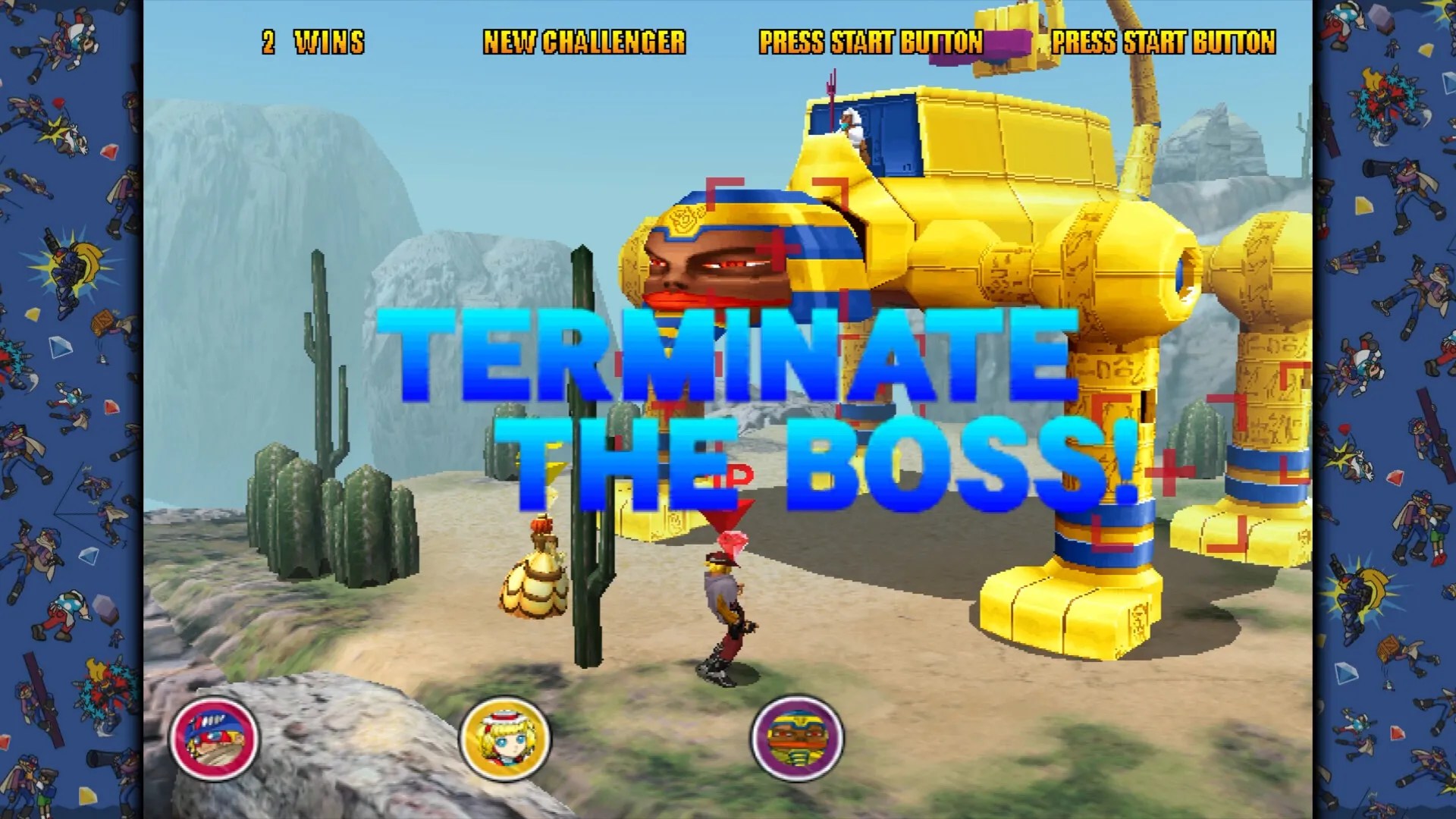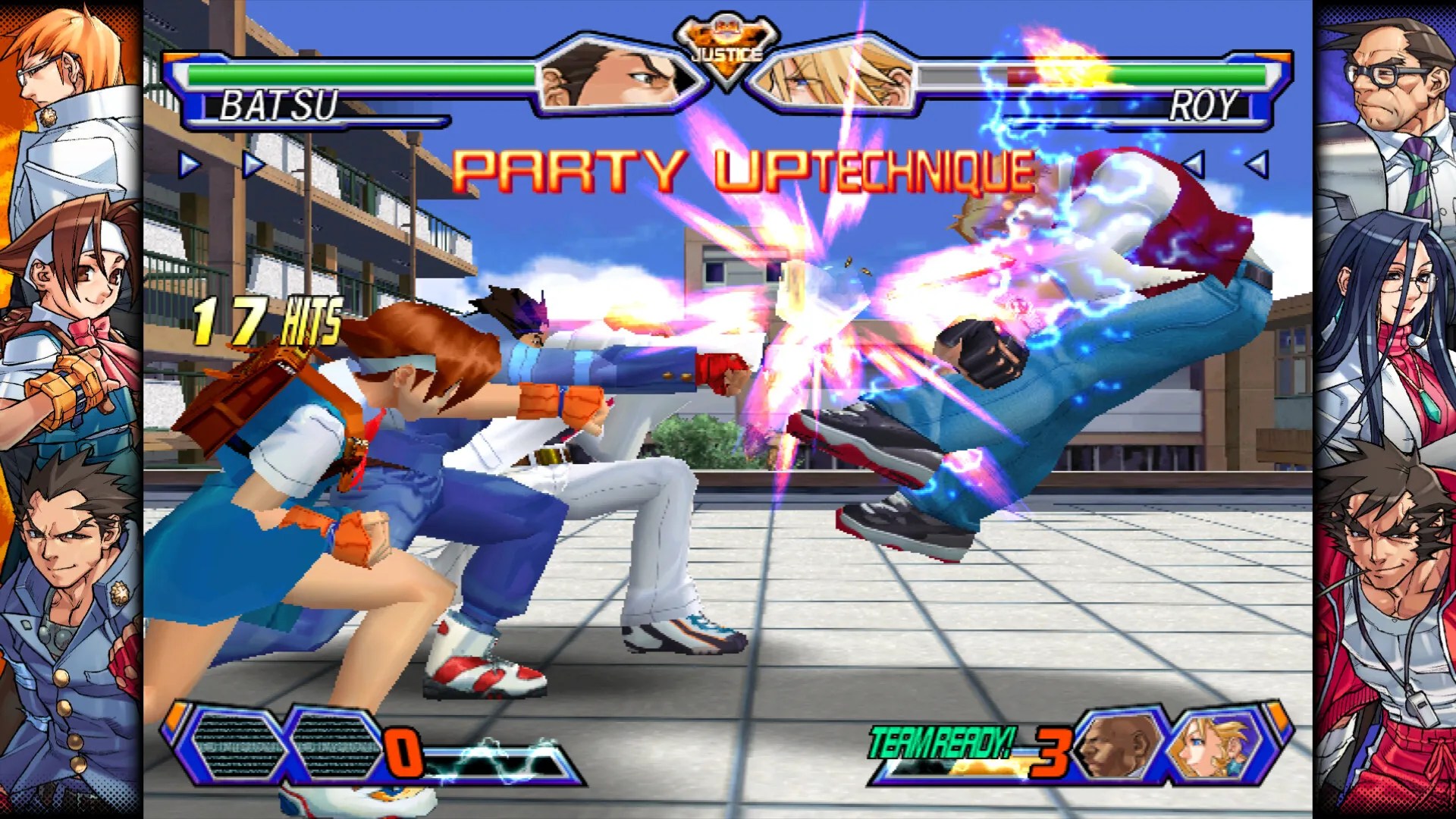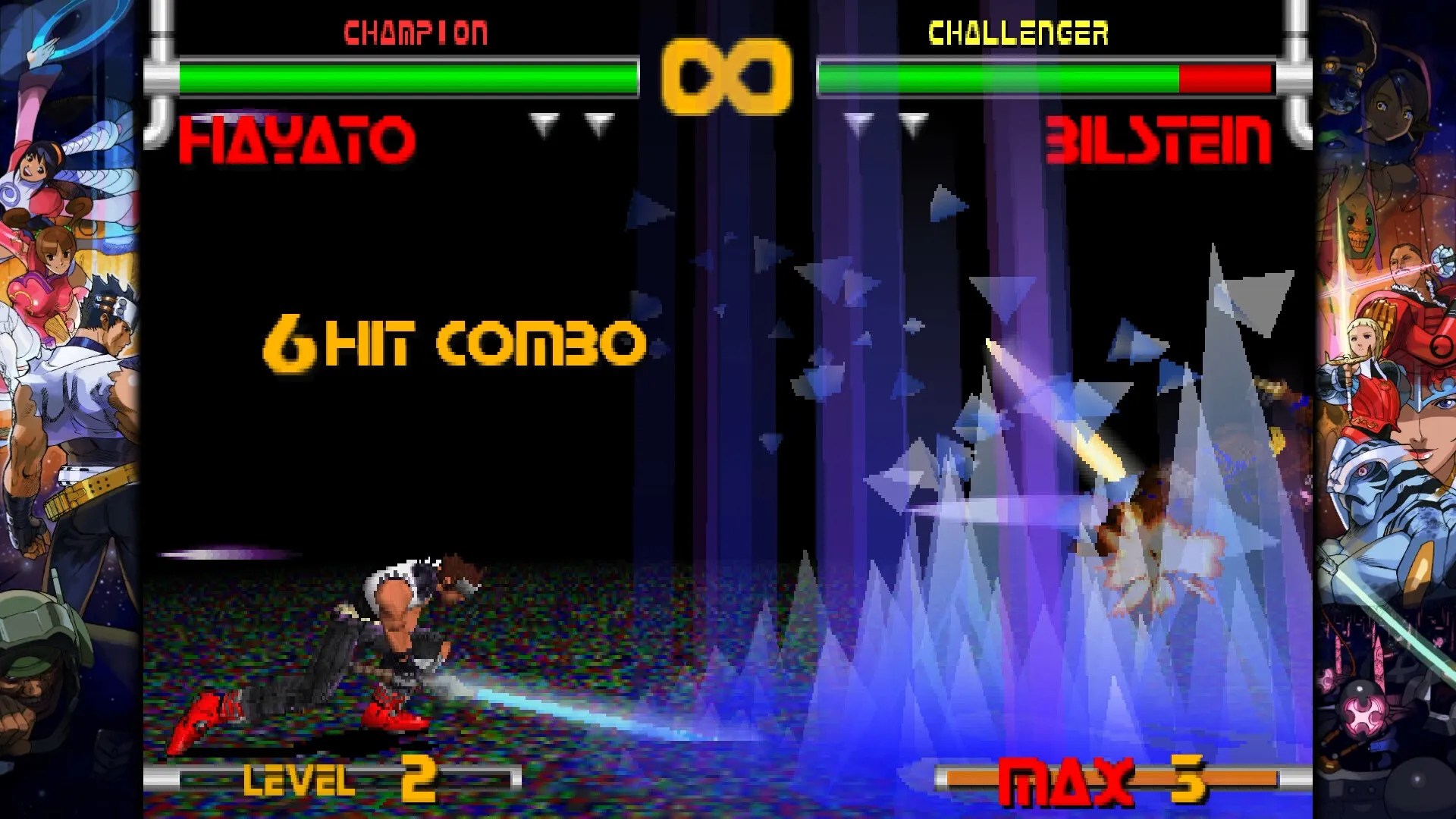The third Capcom fighting game compilation in as many years,Capcom Fighting Collection 2sees the studio continue its ambitious undertaking of collecting and preserving some of its most prestigious and beloved titles. But while the firstCapcom Fighting Collectionfilled in some of the more obvious gaps left by Capcom’sStreet Fighter 30th Anniversary Collection, and last year’sMarvel vs. Capcom Fighting Collectionfinally brought together every crossover title featuring characters from both universes,Capcom Fighting Collection 2takes a bit of a different approach. With the exception of one or two more profound fighting games with dedicated communities, most of the titles included inCapcom Fighting Collection 2are some of the more overlooked and forgotten hidden gems in the studio’s large library of arcade hits. Ultimately, it’s all the better for it.
As a fighting game collection, there’s a lot to love aboutCapcom Fighting Collection 2. Both of thePower Stonetitles remain some of the more fun and accessible arena fighters more than 20 years later, and getting to play them in both single and multiplayer only underscores how much fun these brawlers remain. Similarly, both of theCapcom vs. SNKtitlesare finally collected together and brought to modern hardware — something that hardcore fighting game enthusiasts have been asking for since the originalCapcom Fighting Collectioncame out. The rest of the collection is rounded out by some less-obvious selections whose relative obscurity in the Capcom catalog gives them a second lease on life as part of a new compilation title. So, however greatCapcom Fighting Collection 2is in terms of its roster, it’s arguably even more profound as an act of game preservation.

But that’s not to say that the collection is entirely devoid of any issues. For players who have been familiar with these games since their initial console releases (most of which were primarily on theSega Dreamcast), the strict adherence to their arcade originals prevents them from feeling like “definitive” versions thanks to their missing of various additional modes and features added for their home conversions. And while the inclusion of a robust training mode consistent with the otherCapcom Fighting Collectiontitles allows more casual players to unlock some noticeable gains with time invested in practice, there’s not much longevity inCapcom Fighting Collection 2for players who aren’t interested in competitive online play. Still,Capcom Fighting Collection 2more than justifies its place as an essential new chapter in the studio’s fighting game collection series, and its roster of fighters has just about something for everyone, whether a hardcore or casual fighting game fan.
Capcom Fighting Collection 2 Highlights a Slew of Underrated Capcom Classics
While several of the titles contained in both the firstCapcom Fighting Collectionand theMarvel vs. Capcom Fighting Collectionhave seen other releases since their original arrival in the arcades and on consoles, the same can’t be said about the crop of titles included inCapcom Fighting Collection 2. With just a few notable exceptions, almost every one of the 8games included inCapcom Fighting Collection 2hasn’t seen a home console release since 2000. Most of these games also happened to call the Dreamcast home for their console ports, meaning many of the titles contained inCapcom Fighting Collection 2have been trapped on a dead platform for a quarter-century.
But more than being some of the more obscure or forgotten hidden gems inCapcom’s fighting game library, the titles included inCapcom Fighting Collection 2are some of the more eclectic and unique games from one of the studio’s more experimental and boundary-pushing eras. Alongside ambitious crossover fighters like both of theCapcom vs. SNKtitles,Capcom Fighting Collection 2includes the highly underrated 2.5D fightersPlasma SwordandProject Justice,the beloved arena fightersPower StoneandPower Stone 2, and the excellentCapcom Fighting EvolutionandStreet Fighter Alpha 3 Upper— the latter of which served as the source for the unbelievably good Game Boy Advance port ofStreet Fighter Alpha 3.

As someone who grew up playing most of these games on the Dreamcast as a casual fighting game fan, it’s impressive to see how well each of the titles included inCapcom Fighting Collection 2holds up. Regardless of your familiarity with these games or their history, there’s something for just about everyone inCapcom Fighting Collection 2’s roster of titles, and the inclusion of both the Japanese and the English versions of each game is a welcome feature consistent across the entireCapcom Fighting Collectionseriesthat allows players to spot the subtle differences between regional ROMs. Throw in the ability to apply up to 7 different display filters alternating between arcade perfect and modern settings, or the ability to change out the bezels for each game using a wide variety of original artwork for each title, and you have a selection of games that look just as good as they play.
Capcom Fighting Collection 2’s Quality-of-Life Features Are a Welcome Update
Aside from the ability to change how each of the games inCapcom Fighting Collection 2might look during gameplay, this latest entry in Capcom’s compilation series brings a slew of quality-of-life improvements to each title that have now become practically standard inclusions. There’s the expected ability to tie all special moves to a single button press, or opt to have secret characters in games' rosters available by default. Additionally, the Quick Save function is back once again, allowing players to stop midway through any of the included titles' arcade modes and return where they left off. But the true stars ofCapcom Fighting Collection 2are the includedTraining Modeand the implementation of rollback netcode for online play.
While online functionality was somewhat limited during mypreview ofCapcom Fighting Collection 2, the review window created an opportunity to try out both casual and ranked matches for several of the included titles. First and foremost,Capcom Fighting Collection 2has made the simple act of matchmaking exciting. Whether in casual or ranked online play, players can stand by for a match while either perusing the impressive museum or getting in some training. It’s a small inclusion, but one that arguably smooths over the sometimes longer wait for a match, and getting the chance to commit to some last-minute practice before putting your skills to the test is a nice touch.
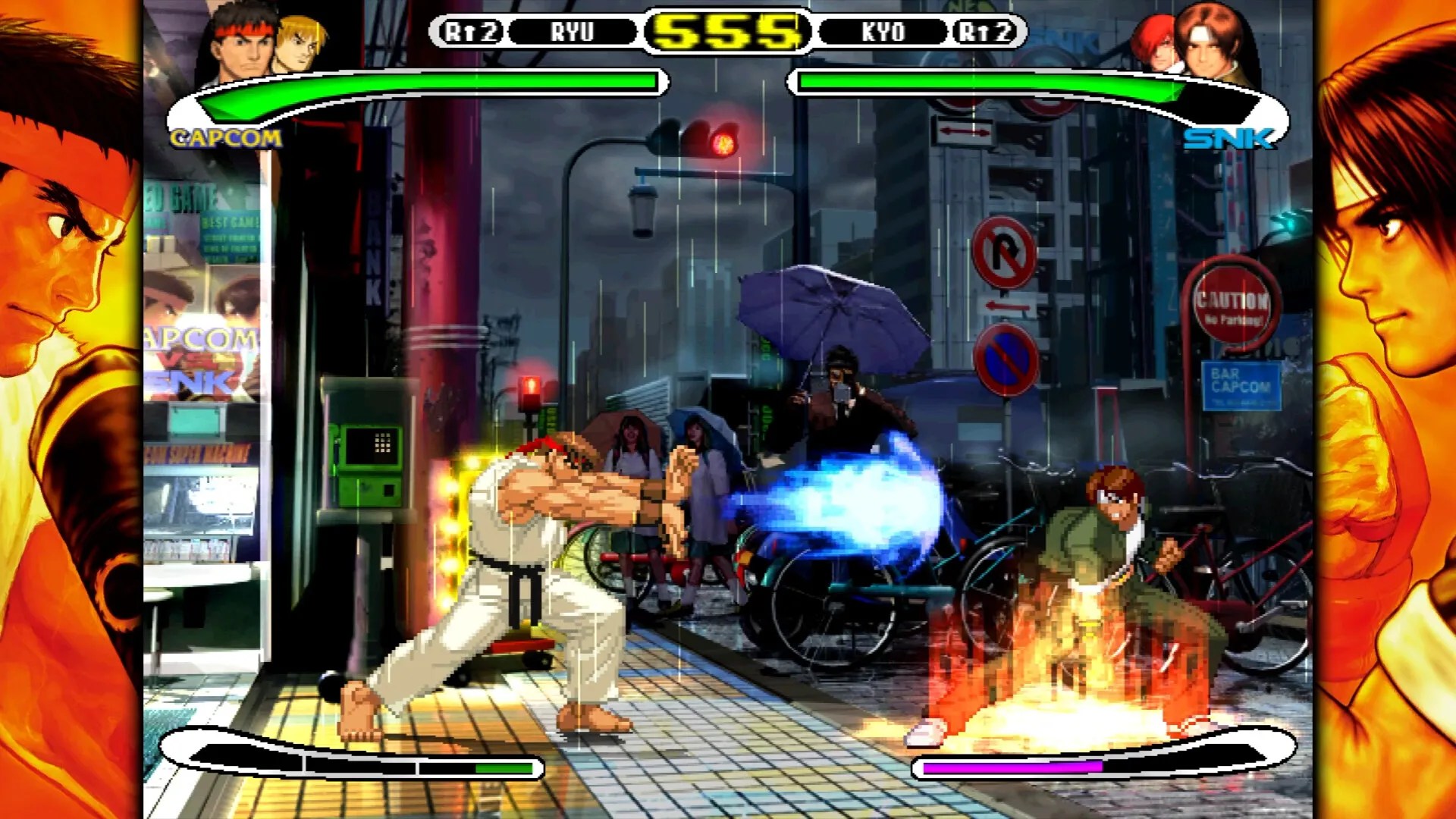
In both ranked and casual online matches, there was never any noticeable lag or delay, which is a testament to how importantCapcom’s inclusion of rollback netcode is to theCapcom Fighting Collectionseries.Capcom Fighting Collection 2features quite a few titles that still have known competitive communities (especially theCapcom vs. SNKgames), so it’s great to see that the compilation’s online functionality is working as intended. During my time playing casual matches inPlasma Sword,Power Stone 2, andCapcom vs. SNK 2, I never had to wait too long for a match, and fighting against others always felt smooth and responsive, even with it set to cross-region play.
Capcom Fighting Collection 2’s Training Mode is as impressive as it’s been in the otherCapcom Fightingcompilations. Not only can players access each title’s individual training mode directly from the main game selection screen, but they can also switch games from within the training mode without having to back out to the main menu. Training Mode also includes all the bells and whistles that you’d expect, such as hitbox indicators, button press logs, damage statistics, and more.Capcom Fighting Collection 2’s Training Mode is arguably one of the collection’s greatest features, and it’s just as essential for casual players hoping to improve their skill as it is for returning fighting game enthusiasts looking to learn a new character or brush up on an old favorite.
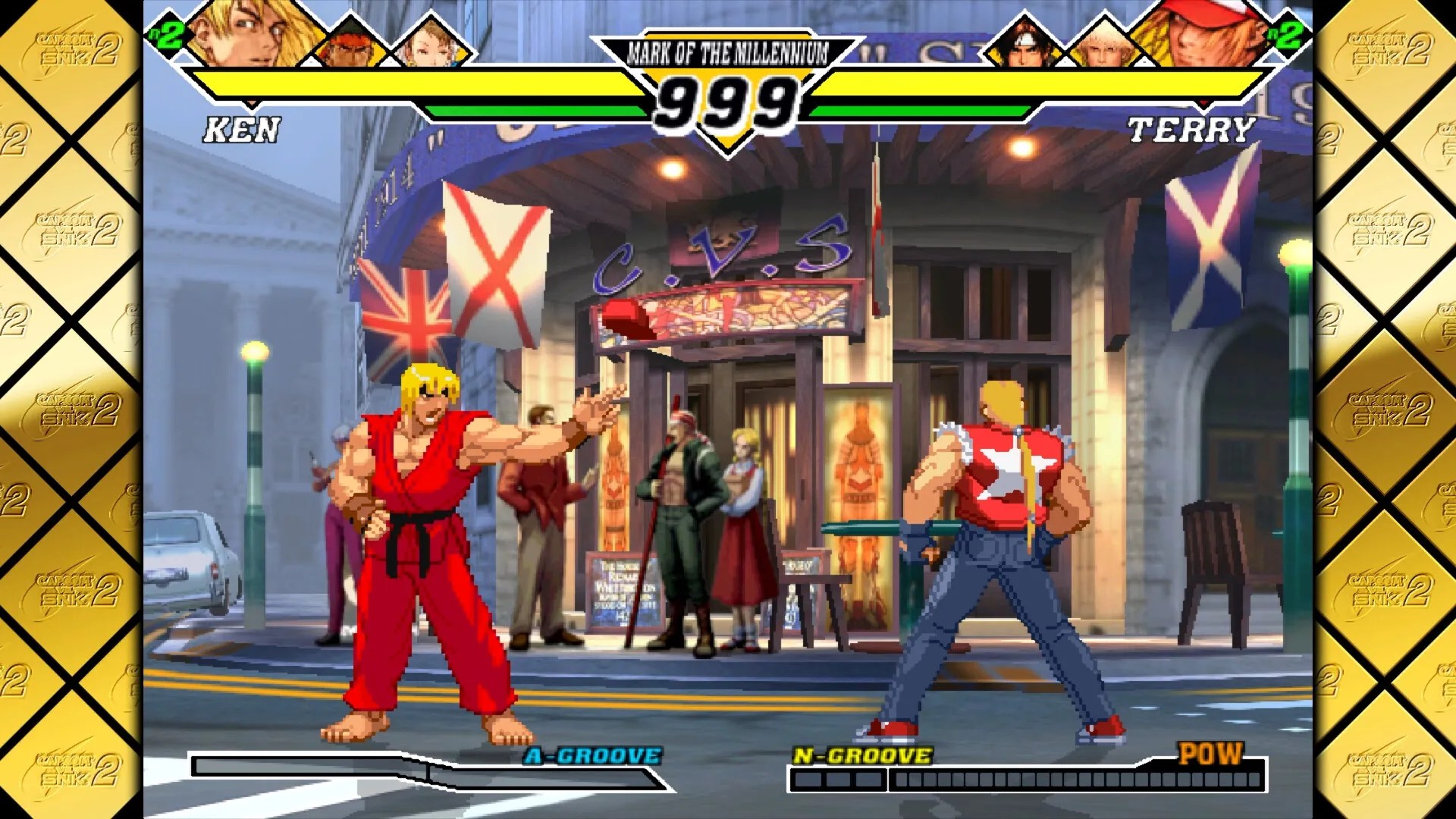
Game Preservation Is at the Forefront of Capcom Fighting Collection 2, For Better or Worse
Along with the games themselves,Capcom Fighting Collection 2includes an in-game museum chock-full of digital artifacts for each title, such as marquee cards, promotional and instructional pamphlets, concept art, design documents, and more. Together with the arcade-perfect representation of each of the 8 included titles,Capcom Fighting Collection 2’s museum serves as an act of game preservation done right. However, that emphasis on presentation also serves as a point of contention for the compilation.
Each of the 8 games included inCapcom Fighting Collection 2is a 1:1 port of its original arcade version. While that might sound ideal for fighting game enthusiasts, it also means that none of the included games have the additional features or modes that were part of their original console releases. As a result, it’s hard to truly call the versions of these games included inCapcom Fighting Collection2their “definitive” releases.

Still,Capcom Fighting Collection 2is one of the more impressive entries in Capcom’s growing series of compilation titles precisely because it unearths and preserves an eclectic selection of titles that often get overshadowed by largerseries likeStreet FighterorDarkstalkers. Each of the included titles' arcade modes is still incredibly fun while they last, and bringing underrated classics likePower Stoneto a modern audience brings hope that Capcom might revive the series someday. Casual fans will quickly run out of reasons to regularly return to each of the included games unless they decide to dabble in online multiplayer, but as another entry in theCapcom Fighting Collectionseries,Capcom Fighting Collection 2is just as essential as its two predecessors and a must-have for fans of Dreamcast-era fighting games.
